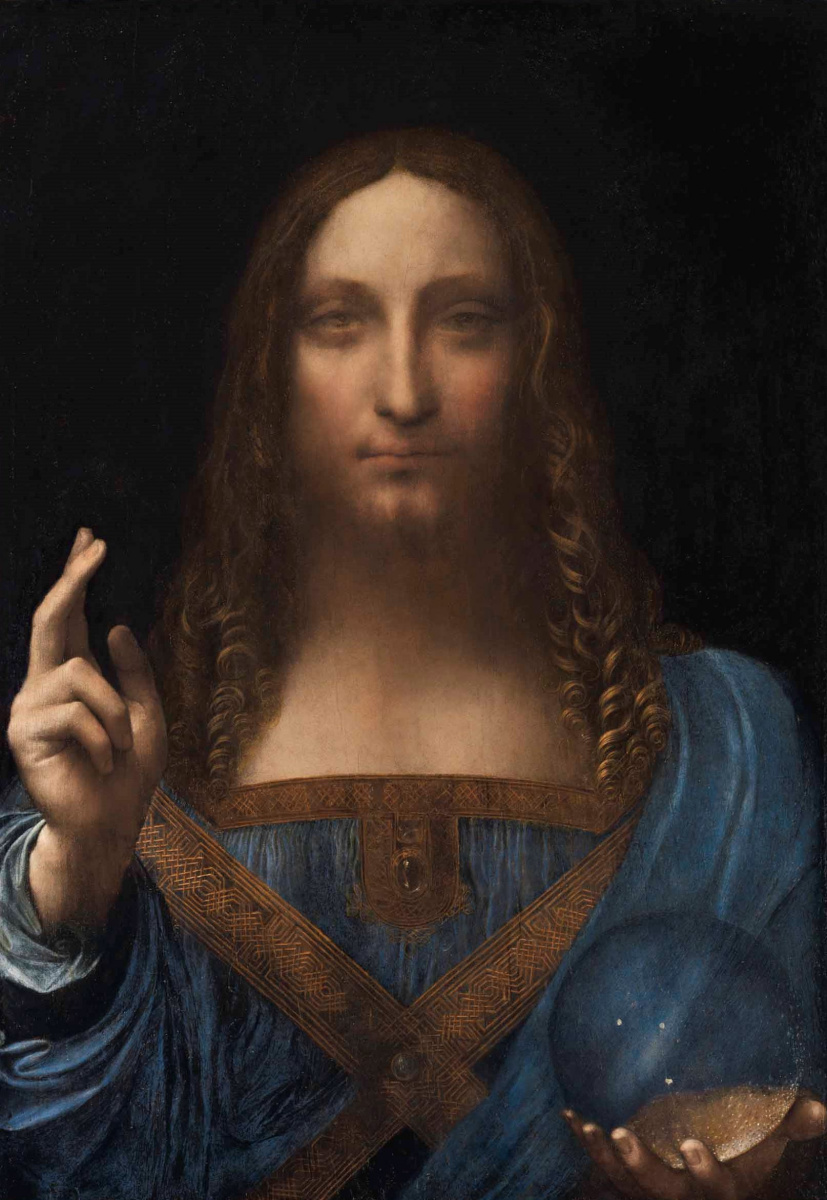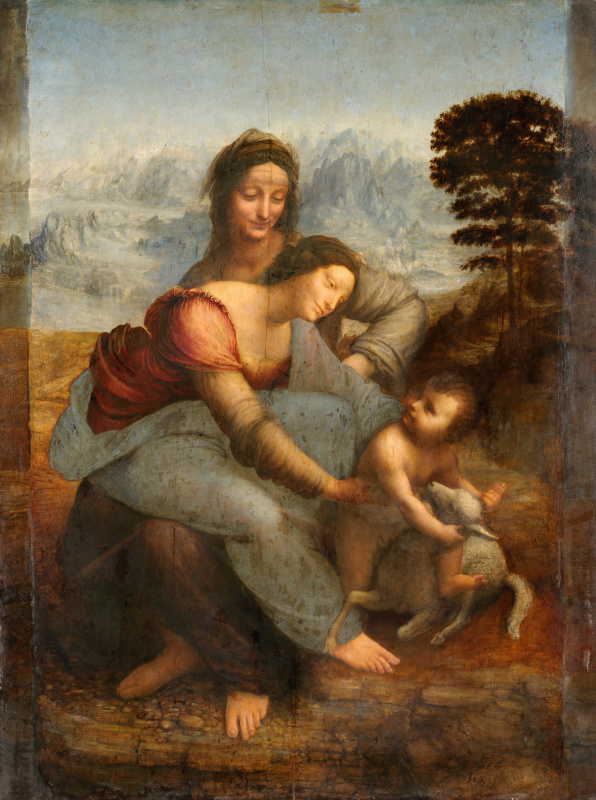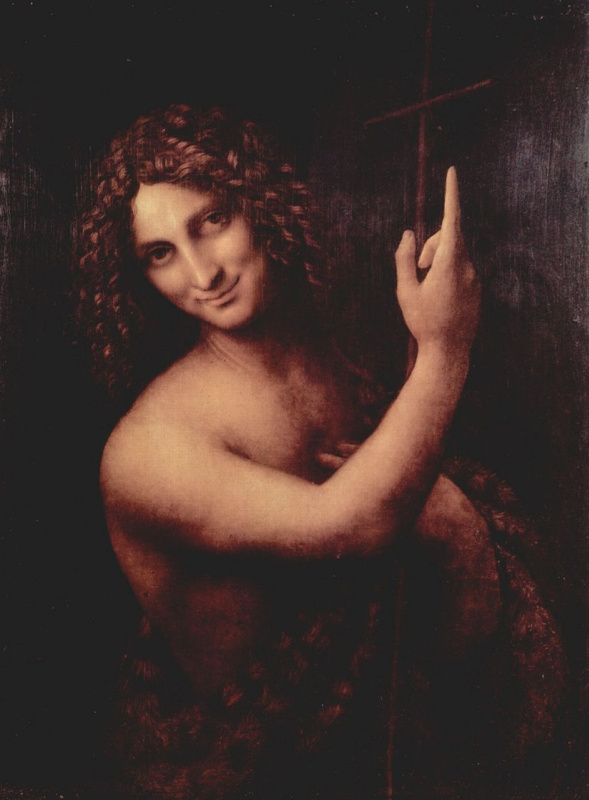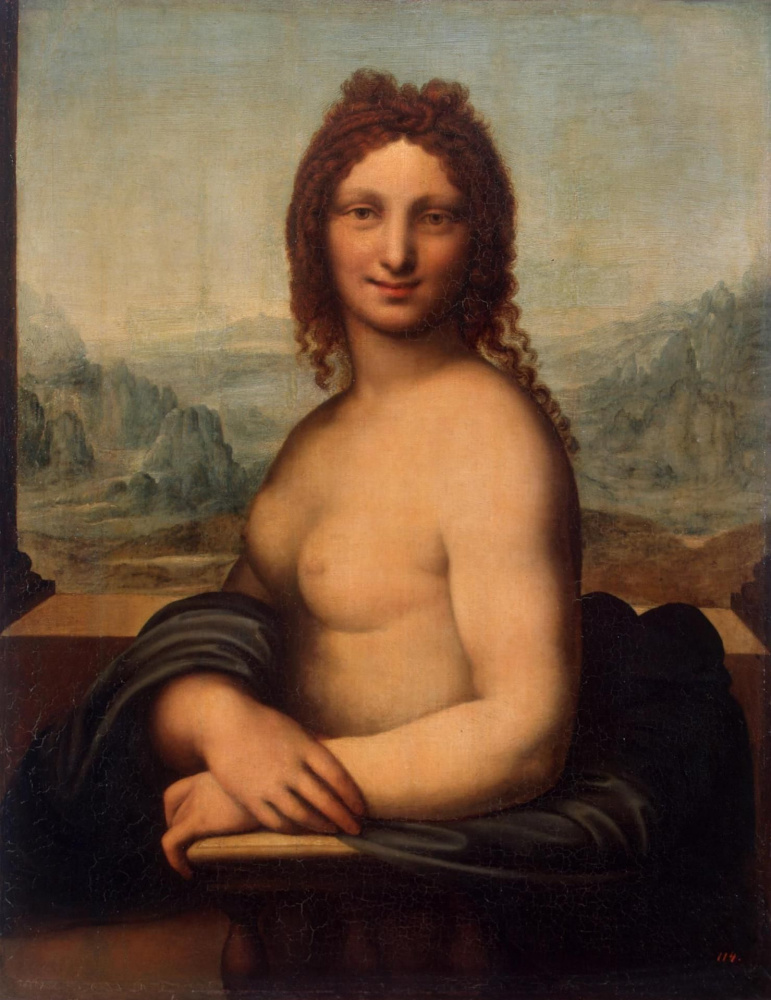The Louvre’s director initiated negotiations with an anonymous buyer of Salvator Mundi by Leonardo da Vinci that was recently sold at Christie’s for $450.3 million to exhibit it at the Paris museum in 2019.
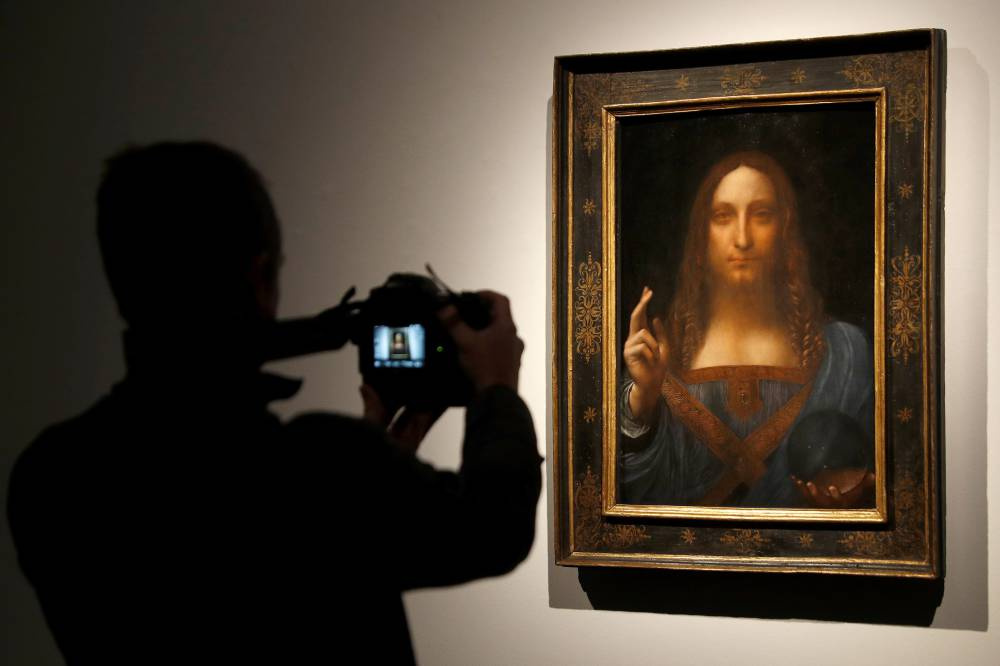
According to the recently released AFP dispatch, Louvre President and Director Jean-Luc Martinez, in an interview with RTL radio, said that he hopes to negotiate for a loan of the most expensive artwork ever sold for a coming Leonardo da Vinci exhibition to celebrate the 30th anniversary of the "Grand Louvre" renovation and expansion in the fall 2019.
"We hope to see Salvator Mundi in Paris," Mr. Martinez said. "The goal is to gather the greatest number of works by Leonardo."
Salvator Mundi (Savior of the World)
1500, 65.7×45.7 cm
If a mysterious buyer or buyers agree, Salvador Mundi will take its place of honor near Leonardo’s most famous painting, the Mona Lisa, and other works of the Master.
The Louvre holds five paintings of Leonardo da Vinci (see bellow), which is one third of the whole extremely rare collection. There are only 15 paintings that are confirmed to be Da Vincis by the experts. All of them are in museum collections except for Salvator Mundi, which is in private hands now. Despite some rumors that identify the buyer as the Louvre Abu Dhabi, the museum’s first foreign outpost opened in the United Arab Emirates, Jean-Luc Martinez has denied Louvre’s interest in such an expensive purchase for its permanent collection.
The Louvre holds five paintings of Leonardo da Vinci (see bellow), which is one third of the whole extremely rare collection. There are only 15 paintings that are confirmed to be Da Vincis by the experts. All of them are in museum collections except for Salvator Mundi, which is in private hands now. Despite some rumors that identify the buyer as the Louvre Abu Dhabi, the museum’s first foreign outpost opened in the United Arab Emirates, Jean-Luc Martinez has denied Louvre’s interest in such an expensive purchase for its permanent collection.
"Should we have tried to acquire it?" the Louvre’s director asked. "The answer was no."
Whether or not the buyer agrees on the terms of Salvator Mundi's loan, the Leonardo’s blockbuster exhibition in the Louvre will surely be filled with revelations the fall 2019. We know that behind closed doors in the Louvre’s Paris basements, experts have been scrutinizing a charcoal drawing of a nude figure resembling Mona Lisa for months bearing one question in their minds: Could this half-naked and half-smiling lady with a pointed chin and her hands folded in exactly the same way like the Mona Lisa be a sketch by Leonardo da Vinci?
A drawing known as Mona Vanna or the "nude Mona Lisa" has long being attributed to one of Leonardo da Vinci’s students, and since the 20th century, to Andrea Salai in particular. Some researchers thought that Salai’s version was only a copy of a lost original by the master.
However, at present, the Louvre’s experts ponder of the extent of Leonardo’s contribution to the work and even think that the charcoal sketch may have been drawn by the master himself.
A colorless drawing has been held in the collection of the Condé Museum, north of Paris, since 1862. Its deputy curator Mathieu Deldicque told Reuters that the sketch was made in the same period as Mona Lisa, during da Vinci’s lifetime, and the paper on which it was drawn was made in Italy.
A drawing known as Mona Vanna or the "nude Mona Lisa" has long being attributed to one of Leonardo da Vinci’s students, and since the 20th century, to Andrea Salai in particular. Some researchers thought that Salai’s version was only a copy of a lost original by the master.
However, at present, the Louvre’s experts ponder of the extent of Leonardo’s contribution to the work and even think that the charcoal sketch may have been drawn by the master himself.
A colorless drawing has been held in the collection of the Condé Museum, north of Paris, since 1862. Its deputy curator Mathieu Deldicque told Reuters that the sketch was made in the same period as Mona Lisa, during da Vinci’s lifetime, and the paper on which it was drawn was made in Italy.
Approximately 20 paintings of nude women that look like Mona Lisa are exhibited or stored in museums across the world. One of the most famous, the Dona Nuda, is kept at the Hermitage in St. Petersburg, Russia.
Nude woman ("Donna Nuda"). Scuola Leonardo da Vinci
XVI century, 86.5×66.5 cm
After experts at the Louvre finish their analyses, the charcoal sketch
Mona Vanna is scheduled to be returned to the Condé Museum, followed by negotiations to borrow it and some other paintings from museums in Germany, Italy and Russia, to display them at the 2019 exhibition.
"At least both the Louvre’s Mona Lisa and the naked Mona Lisa have one thing in common: They will always keep a lot of mysteries," Mr. Deldicque said. We guess these words can refer to Salvator Mundi all well.
Recently, the Louvre was named the most-visited and most-Instagrammed museum in the world. Around 7.4 million people came to see the Louvre’s collection in 2016, and the vast majority of visitors headed towards arguably the Paris museum’s most famed work of art: Leonardo da Vinci’s Mona Lisa.
A 2019 Louvre’s exhibition bringing together every Leonardo painting in the world, or at least most of them, would undoubtedly hit the charts of attendance once again.
"At least both the Louvre’s Mona Lisa and the naked Mona Lisa have one thing in common: They will always keep a lot of mysteries," Mr. Deldicque said. We guess these words can refer to Salvator Mundi all well.
Recently, the Louvre was named the most-visited and most-Instagrammed museum in the world. Around 7.4 million people came to see the Louvre’s collection in 2016, and the vast majority of visitors headed towards arguably the Paris museum’s most famed work of art: Leonardo da Vinci’s Mona Lisa.
A 2019 Louvre’s exhibition bringing together every Leonardo painting in the world, or at least most of them, would undoubtedly hit the charts of attendance once again.
Written on materials of the louvre, artnet news, the new york times, national geographic, hyperallergic, forbes.






